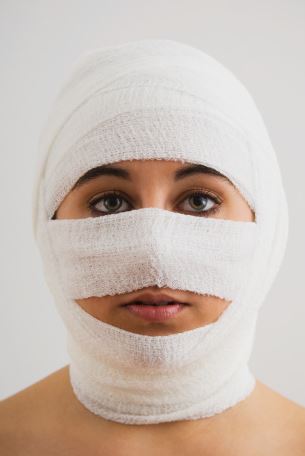Rhinoplasty Services: Sculpting Your Ideal Nose

Defining Aesthetic and Functional Goals with Rhinoplasty
Rhinoplasty, or nose reshaping surgery, is one of the most common plastic surgery procedures. Dr. Weiss specializes in rhinoplasty to modify the size and shape of your nose, enhance facial harmony, and correct functional issues. This procedure can address drooping lids, reduce under-eye puffiness, and improve obstructed vision, though it does not alter other facial wrinkles or sagging eyebrows.
Tailored Approaches for Individual Needs
Ideal Candidates for Rhinoplasty
Initial Consultation with Dr. Weiss
Anesthesia and Surgical Procedure
Recovery and Post-Surgery Expectations
Long-Term Results and Psychological Impact
Choose Dr. Weiss for Expert Rhinoplasty
Schedule a consultation with Dr. Weiss to explore how rhinoplasty can achieve your desired nose appearance and functionality. Dr. Weiss's expertise ensures a personalized approach for optimal results and patient satisfaction.
Rhinoplasty, or nose reshaping surgery, is one of the most common plastic surgery procedures. Dr. Weiss specializes in rhinoplasty to modify the size and shape of your nose, enhance facial harmony, and correct functional issues. This procedure can address drooping lids, reduce under-eye puffiness, and improve obstructed vision, though it does not alter other facial wrinkles or sagging eyebrows.
Tailored Approaches for Individual Needs
- Versatility: Rhinoplasty can increase or decrease nose size, change the shape of the tip or bridge, narrow nostrils, or modify the angle between the nose and upper lip.
- Comprehensive Care: Beyond aesthetic improvement, it also corrects birth defects, injuries, and certain breathing problems.
Ideal Candidates for Rhinoplasty
- Broad Suitability: Ideal for those seeking improvement rather than perfection, physically healthy, psychologically stable, and realistic in expectations.
- Age Consideration: While often performed on adults, teenagers may undergo rhinoplasty post-growth spurt, considering both physical and emotional maturity.
Initial Consultation with Dr. Weiss
- Thorough Evaluation: Dr. Weiss assesses your nasal structure and discusses potential outcomes and techniques, ensuring a clear understanding of the procedure's scope and limitations.
- Insurance Considerations: While most cosmetic surgeries are not covered by insurance, rhinoplasty for reconstructive or functional purposes may be eligible for coverage.
Anesthesia and Surgical Procedure
- Anesthesia Options: Local or general anesthesia, depending on the procedure's extent and patient preference.
- Surgical Technique: Involves sculpting the bone and cartilage and re-draping the skin, with incisions typically made inside the nostrils or across the columella for more complex cases.
Recovery and Post-Surgery Expectations
- Post-Operative Care: Includes managing discomfort, swelling, and specific instructions for a smooth recovery, like elevated head positioning and cold compress application.
- Resuming Activities: Guidelines for gradually returning to normal activities, with specific advice on physical exertion, sun exposure, and facial care.
Long-Term Results and Psychological Impact
- Gradual Healing: Final results may take up to a year to fully manifest, with subtle changes continuing for several months.
- Emotional Adjustment: Patients may experience varied reactions from others but are encouraged to focus on their personal satisfaction with the outcomes.
Choose Dr. Weiss for Expert Rhinoplasty
Schedule a consultation with Dr. Weiss to explore how rhinoplasty can achieve your desired nose appearance and functionality. Dr. Weiss's expertise ensures a personalized approach for optimal results and patient satisfaction.


